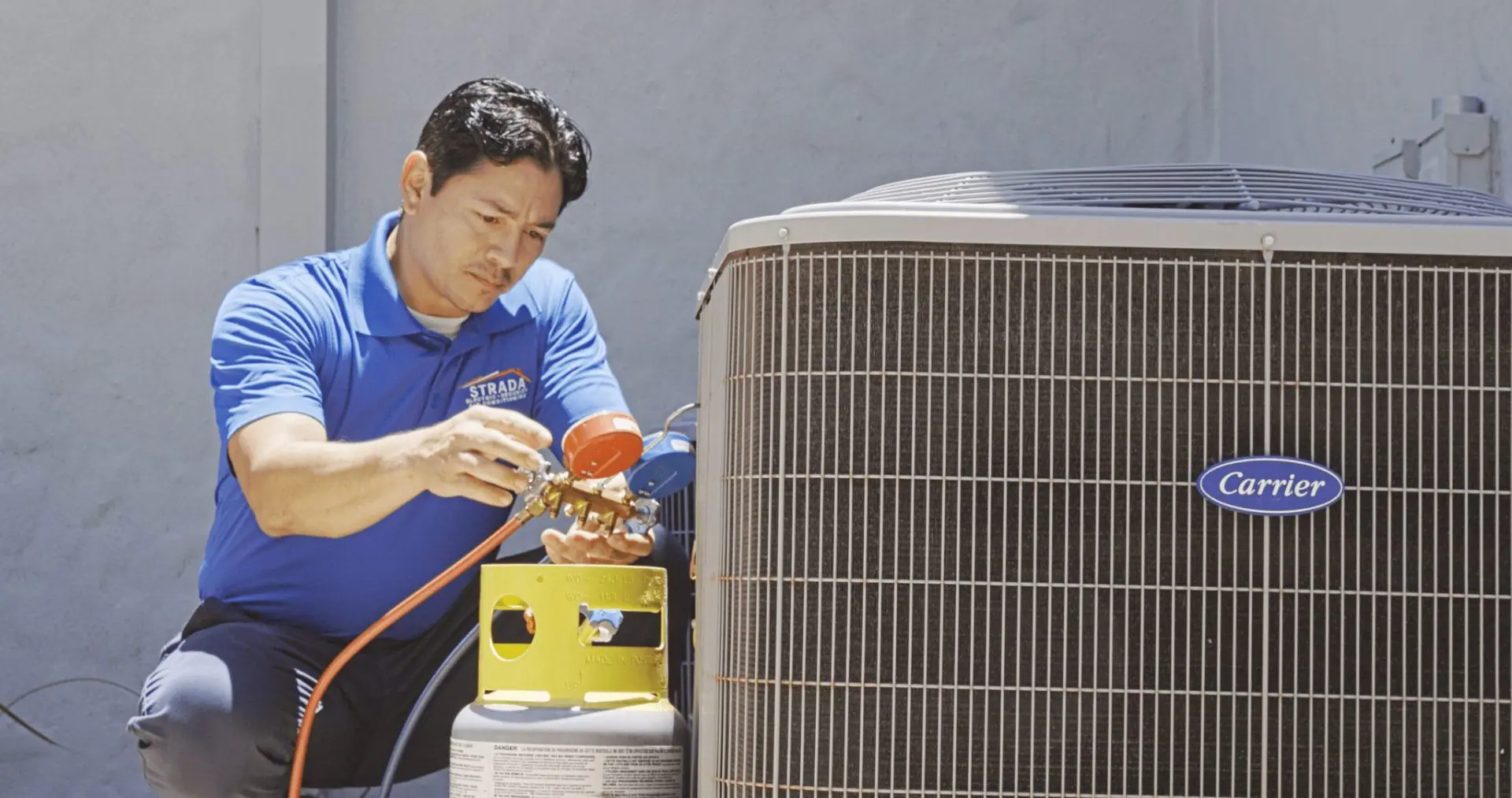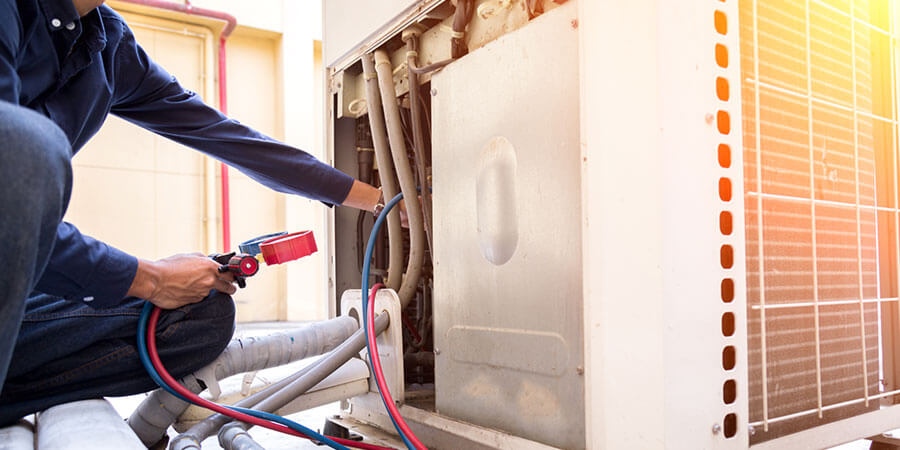Why Homeowners are Switching to ductless mini splits for Modern HVAC Needs
Why Homeowners are Switching to ductless mini splits for Modern HVAC Needs
Blog Article
How a Warmth Pump and Heating System Collaborate to Enhance Your Home's Heating Performance
Recognizing exactly how a heatpump and heating system work with each other is vital for home owners seeking effective heating options. Each system has its strengths, offering a well balanced approach to home convenience. The heatpump masters modest temperatures, while the heating system provides fast heat during severe cold. This harmony not just lowers power prices but likewise enhances the life-span of both home appliances. What variables influence this collaboration, and how can homeowners optimize their advantages?
Understanding Warm Pumps: Just How They Work
Although many individuals may be not familiar with their inner workings, heat pumps play an essential function in modern heating systems. These gadgets operate by moving heat from one area to one more, utilizing the concepts of thermodynamics. In chillier months, a heat pump extracts heat from the outdoors air, ground, or water, and transfers it inside your home to warm up the space. Alternatively, during warmer months, it can reverse the process, functioning as an ac unit by getting rid of warm from inside to the outside.Heat pumps are composed of an evaporator, expansion, compressor, and condenser shutoff. The cooling agent within the system soaks up heat as it evaporates at low temperatures and stress. The compressor after that enhances the stress and temperature of the refrigerant, allowing it to release warm as it condenses. This efficient process can considerably lower power intake compared to standard home heating techniques, making heat pumps a sustainable choice for climate control in homes.
The Role of Heaters in Home Home Heating
Heaters play a crucial duty in home heating by giving a reputable source of heat throughout the cooler months. They operate by creating warm with combustion or electric resistance, dispersing it throughout the home via ducts or radiant systems. The performance of a heater is often measured by its Annual Fuel Use Performance (AFUE) ranking, which indicates how efficiently the unit converts gas into heat.Furnaces can utilize numerous energy resources, consisting of natural gas, oil, lp, or power, allowing homeowners to choose the most suitable option for their demands. Unlike warm pumps, which may have a hard time in extreme cool, furnaces preserve regular performance, making certain that interior temperatures continue to be comfy no matter outdoor problems. Additionally, modern-day heating systems frequently come furnished with innovative innovation, such as variable-speed blowers and wise thermostats, boosting their effectiveness and responsiveness. This flexibility makes heaters an important element in comprehensive home heating strategies.

Benefits of Making Use Of Both Equipments Together
Combining the toughness of both heating systems and heatpump can lead to a more effective and reliable home heating service. Using both systems permits homeowners to make use of the heat pump's power effectiveness during milder temperature levels while relying upon the heating system for even more extreme cold conditions. This dual strategy can significantly lower power expenses, as heatpump consume much less power than typical home heating approaches when temperature levels are moderate.Additionally, utilizing both systems together can boost comfort degrees in the home. Warm pumps can provide consistent, even home heating, while heaters can swiftly raise ambient temperature levels when needed. The integration of both systems can prolong the life expectancy of equipment by decreasing wear and tear on each unit, as they share the work. Eventually, property owners can appreciate a balanced, affordable heating option that adjusts effortlessly to differing weather condition problems, guaranteeing a cozy and inviting home throughout the winter months.
How Warm Pumps and Furnaces Enhance Each Various Other
When house owners incorporate heatpump and heaters, they create a corresponding home heating system that makes best use of efficiency and comfort. Heatpump run by moving warm from the outside air or ground, making them extremely effective in modest environments. They excel throughout milder temperatures, giving affordable home heating. On the other hand, heaters produce warm with burning or electrical resistance, delivering strong, prompt warmth during severe cool conditions.The combination of these 2 systems permits vibrant modifications based on temperature changes. During warmer months or milder winter days, the heatpump can take the lead, preserving power and lowering costs. As temperatures decline, the heating system can perfectly involve, guaranteeing constant heat throughout the home. This synergy not just enhances power usage but additionally improves the life expectancy of both systems, as each device runs within its optimal efficiency range. Together, they produce a well balanced setting that adapts to differing climate needs.
Maximizing Efficiency: Tips for Homeowners
House owners can enhance their heating performance with a number of sensible methods. Developing a normal upkeep schedule, incorporating smart thermostat technology, and implementing effective insulation and sealing options are crucial steps. These procedures not only boost comfort however additionally minimize power prices.
Normal Maintenance Schedule
To assure optimal heating effectiveness, developing a routine maintenance routine is important for any home. House owners must prioritize regular evaluations of both heatpump and heaters to establish peak efficiency. This includes altering air filters every one to three months, as clogged filters can substantially lower performance. Additionally, organizing specialist maintenance a minimum of once a year enables technicians to determine and address potential concerns prior to they intensify. Property owners need to also cleanse the heat pump's exterior unit to stop particles build-up that can hinder air movement. By adhering to a routine upkeep schedule, home owners not just boost their heating unit' efficiency however click also extend their life expectancy, resulting in better comfort and reduced energy costs throughout the colder months.
Smart Thermostat Assimilation
Incorporating a smart thermostat right into a home heater can greatly improve energy performance, especially as it allows for exact control over temperature level settings. These gadgets can find out the house owner's schedule and choices, instantly readjusting the temperature to maximize comfort while minimizing power use. They can lower home heating throughout times when the home is unoccupied, decreasing unneeded consumption. Many wise thermostats likewise supply real-time power usage data, allowing home owners to make educated choices concerning their heating routines. In addition, remote gain access to through smart device applications permits users to readjust settings from anywhere, making certain the home is cozy upon return. Overall, smart thermostat assimilation not only improves convenience but substantially contributes to power savings and performance.
Insulation and Securing Solutions
Smart thermostats play a vital role in energy effectiveness, yet their performance can be greatly enhanced by correct insulation and securing services. House owners must focus on insulating floorings, attics, and wall surfaces to minimize warmth loss. Premium insulation materials, such as spray foam or fiberglass, can substantially improve thermal resistance. Furthermore, sealing gaps around doors, air ducts, and windows stops chilly air seepage and warmth escape. Weatherstripping and caulking work approaches for addressing these leaks - furnace replacement. Normal assessments for air leakages, along with the anchor usage of blower door examinations, can aid recognize issue areas. By purchasing insulation and securing, house owners can enhance the efficiency of their heating systems, ultimately causing reduced energy usage and reduced utility bills
Usual Misconceptions Regarding Heat Pumps and Furnaces
What misconceptions border warm pumps and furnaces? Lots of individuals erroneously think that heatpump are inadequate in chillier climates. In truth, modern heatpump are developed to operate efficiently even in low temperature levels, providing trusted heating throughout winter. One more typical misconception is that heating systems are constantly extra reliable than heatpump. This depends on the particular power resources and efficiency scores of the devices in inquiry. Some may also think that utilizing both systems concurrently is unnecessary, yet as a matter of fact, this combination can optimize home heating performance, particularly during severe weather. Additionally, individuals typically assume that heat pumps require consistent upkeep, when in reality, they have comparable upkeep needs to conventional heating unit. By exposing these misconceptions, homeowners can make more enlightened decisions concerning their home heating alternatives, ultimately resulting in boosted convenience and energy efficiency in their homes.
Maintenance Considerations for Combined Solutions

Frequently Asked Inquiries
Can Warmth Pumps Job Efficiently in Extremely Cold Climates?
Warmth pumps can have a hard time in incredibly cool climates as a result of lowered effectiveness and heat removal constraints. Nevertheless, advancements in modern technology have actually caused models created for far better performance in such conditions, boosting their stability in rough environments.
How Much Time Do Warmth Pumps and Furnaces Normally Last?
Heatpump generally last 15 to twenty years, while heating systems have a life-span of 15 to 30 years. Routine upkeep can prolong their durability, guaranteeing efficient procedure and lowering the need for premature replacements.

What Is the Average Expense of Setting Up Both Solutions?
The typical price of setting up both a heatpump and a furnace generally varies between $5,000 to $10,000 - furnace replacement. Factors affecting this expense include system size, installation complexity, and regional labor prices
Exist Tax Rewards for Utilizing Energy-Efficient Heating Solutions?
Numerous property owners ask about tax obligation incentives for energy-efficient home heating systems. Different federal and state programs often offer credit reports or refunds, urging the fostering of lasting modern technologies to minimize energy consumption and promote ecological responsibility.
Exactly how Do I Choose the Right Dimension Heat Pump and Furnace?
Selecting the ideal dimension heatpump and furnace entails determining the home's square video, thinking about insulation high quality, and assessing local climate. Consulting a specialist can assure suitable system efficiency and energy effectiveness based on specific demands. furnace replacement. Understanding just how a warmth pump and heater work with each other is necessary for property owners looking for reliable heating services. In chillier months, a warm pump essences pop over to this site warm from the outdoors air, ground, or water, and transfers it indoors to heat the living space. When homeowners incorporate warmth pumps and heaters, they create a complementary heating system that makes best use of performance and convenience. Warm pumps operate by transferring warmth from the outside air or ground, making them very effective in modest climates. Heat pumps can battle in very cold environments due to lowered effectiveness and warm removal restrictions
Report this page